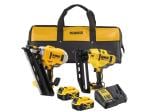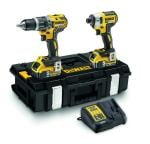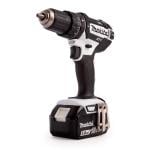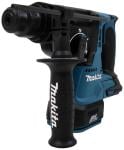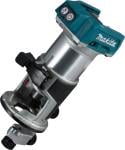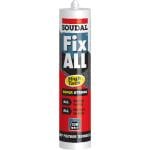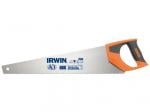How to Use a Laser Level
Whether you are putting up a picture or commencing on a large and professional building project a laser level is a must-have tool, allowing you to properly align everything the way you need with the least amount of hassle and error.
While the old ways of using a pencil and a measure were OK at the time, using a laser level is a far easier way to get the job done right, as long as you know how to properly use one. Here we will look at what exactly a laser level is, the different types on the market and how and when to use one to help you keep your project straight.
What Is a Laser Level?
A laser level, much like a regular level, is used to show a straight and even line either horizontally or vertically. This is so important in building, surveying and moving and installing, so you must use it right. A laser level stands out in that it has a steady and continuous line of light that is constantly projected onto a surface.
This is better than other levels as it can easily be moved to go along with whichever job you are doing, like putting up picture rails, instead of you having to manually check each new point. It will project on or more lines or dots along the axis you want to help you align your work and get the perfectly straight line you need.
A self-levelling laser will automatically find the correct level for you further reducing the chance of inaccuracies and making it even easier to maintain the correct level while you can also go with a manual option and find your line looking at the bubble vials like you would with a classic level.
What Types of Laser Levels Are Available?
There are different types of laser levels available and it is important before you begin to know which kind you want. You should decide if it is worth investing in something better that will last longer and prove more versatile or something cheaper and simpler for occasional jobs. Here are some of the key options available and where they are best employed to help you get the right one for you:
-
Fixed or Spot Laser Levels
A lower-cost option and precisely as it sounds, this is fixed in one position giving you a line for you to mark and make calculations from. This is ideal for the sort of occasional work anyone might find themselves doing, like putting up a painting or bracket on the wall.
Easy to use, cheaper and correspondingly less versatile and handy for larger jobs, only you can decide if this is the level for you. If you find yourself doing this kind of work often, especially as a professional, you may want to check out one of the types described below.
-
Line or Cross Line Laser Levels
Again named remarkably helpfully, a cross line laser level does indeed project a cross pattern onto your surface. Fantastic if you need a vertical as well as a horizontal line, this is again perfect for placing anything you want on the wall like shelves or pictures.
A line level is also great for building work, seeing if the wall, flooring or railing you are building is even at all times and where you want it to be concerning the rest of the house or garden. Slightly more complicated than the simple spot laser, a line or cross-line takes a little longer to set up and is generally a bit more expensive than the former but it is definitely worth the investment.
This static laser gives a constant horizontal line and the extra vertical line at 90 degrees both make it clear at a glance if everything is where it should be and it’ll ensure that it will stay that way.
-
Automatic Rotation or Rotary Laser Levels
Unsurprisingly, this kind of level does indeed rotate, leaving you with a 360-degree line that is incredibly useful and necessary when it comes to laying floors, building walls and entire houses as well as putting up skirting boards and so many other jobs.
It is commonly used for measuring ceiling heights and for the above-mentioned tasks in construction and home decorating. It is also useful for working outdoors, on uneven surfaces, and over long distances. Often the most expensive of the levels discussed here but also the most versatile and even essential to many projects it is again up to you to think about whether you need this in your life. If you tend more towards a little DIY once in a while then you probably don’t, but if you are a professional or undertaking big jobs then this could well be the laser level for you.
How Do You Use a Laser Level?
Now we have looked at the main types and what they are good for, it is time to find out how to use a laser level. Each will come with its precise instructions depending on factors like whether it is mounted or not and may differ from brand to brand, but in general, there are a few key steps you should always follow:
- Set up your level – either mounted on a tripod or stand or fastened to a wall or other structure, it is imperative that your level is secure and not in a position to be knocked or moved.
- The device itself must then be levelled which it may do itself in more expensive models or may be done manually most commonly with bubbles.
- Turn on your laser – if it is self-levelling it may do this then so allow a moment and then check it and see.
- Position it where you want it – indoors this is a little easier, as there will be a wall or surface to catch the beam while outdoors you may need a laser detector.
- Check it twice – it is crucial that you double-check your measurements and that your device is still level before you mark anything off or start building, laying or installing anything.
- Mark it off – you can now mark off the level you want and get to work.
Conclusion
A laser level is a must-have tool for anyone attempting any kind of work from putting up a photo or mirror to building a house. Though some types can cost more than others, like the self-levelling and rotary laser levels, it is a small price to pay to ensure you have accurate measurements and don’t make costly mistakes. Think about where you fit in and which would best suit you, then get searching for your perfect laser level today.
Click here to see our full range of Laser Levels - For sale in both our stores and online


